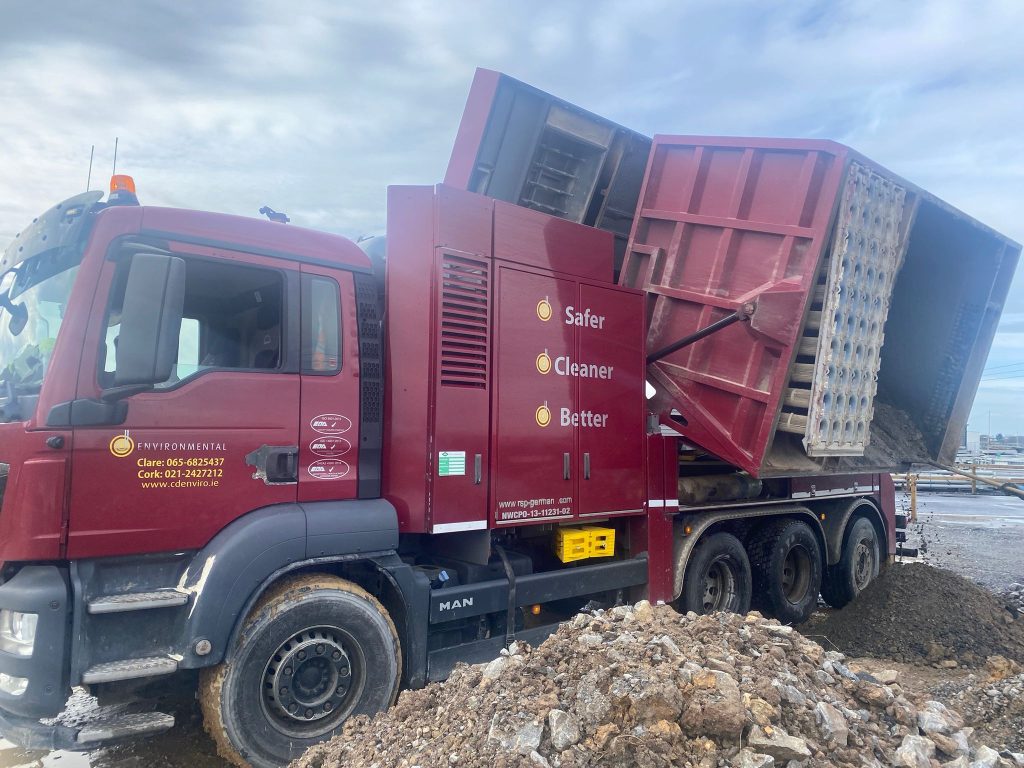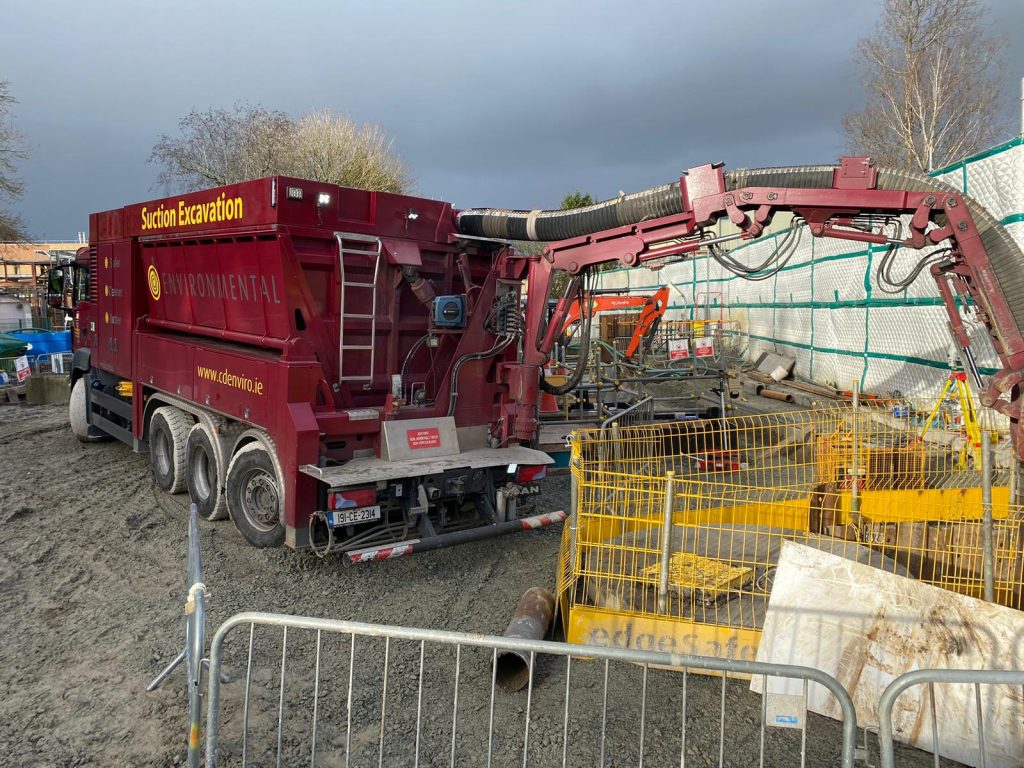Suction Excavation, also referred to as vacuum or hydro excavation, has emerged as one of the most advanced and safest methods for carrying out excavation work around critical utilities such as power cables, gas, water, electric, telecoms, fibre-optics, and other buried assets. As concerns over safety and risk management grow, particularly around high-risk infrastructure, more and more Quality Surveyors and contractors are embracing suction excavation as the go-to choice for complex and high-stakes excavation projects. But like any method, suction excavation comes with its own set of risks, which must be carefully weighed against its significant rewards.
The Rewards of Suction Excavation
One of the most compelling reasons to use suction excavation is its unrivalled ability to safeguard utilities and operators. Traditional excavation methods, such as manual hand-digging or mechanical digging, inherently carry risks, especially when working near sensitive underground infrastructure. Even small errors in judgment or technique can cause costly and dangerous damage to power lines, gas mains, water pipes, and telecom cables. The consequences of such accidents are not only costly in terms of repairs but can lead to long-lasting disruptions to essential services and even pose a risk to public safety.
Suction excavation, however, minimizes these risks significantly. By using high-powered vacuum suction, this method removes soil from around utilities without making physical contact with the buried infrastructure. The powerful suction excavator operates with pinpoint accuracy, allowing operators to excavate safely in close proximity to utilities, such as power cables or gas lines, without the risk of damage. The system uses air or water pressure to loosen the soil before suctioning it away, meaning the utilities remain undisturbed, reducing the likelihood of accidental strikes and service disruptions.
This method also benefits operators, as it eliminates the need for manual digging or the use of large mechanical equipment close to sensitive utilities. With a trained operator behind the controls, the excavation process is not only quicker but also safer. The reduced human interaction with hazardous environments means there is a lower risk of injury from tools, machinery, or accidental utility strikes.
In addition, suction excavation is especially advantageous in urban environments where space is limited. The high specification equipment is compact and manoeuvrable, enabling operators to access confined spaces where traditional machinery might struggle. This makes suction excavation an ideal method for roadworks, utility line installations, repairs, and replacements in densely populated areas.
The Risks of Suction Excavation
While the benefits are clear, it’s important to acknowledge that suction excavation is not entirely without its risks. One potential challenge is the need for specialized equipment and training. Suction excavation machines are sophisticated and require highly trained operators to ensure proper use. Without adequate training, there may be risks associated with mis-operation, such as inefficiencies in the excavation process or damage to the equipment itself.
Furthermore, while suction excavation drastically reduces the risk of utility damage, it is not infallible. In very complex or congested underground utility networks, there may still be a chance of an unintended strike if the utility is deeper or situated in a particularly difficult location to reach with the suction equipment.
Lastly, the cost of suction excavation equipment can be a barrier for some contractors, especially smaller companies that might not be able to afford or justify the investment. However, the long-term savings from preventing damage to utilities, reducing downtime, and minimizing repair costs often outweigh the initial investment, especially when carrying out high-risk projects.
Are the extra costs worth it?
The question of whether the extra costs associated with suction excavation are worth it ultimately depends on the specific circumstances of each project. While the initial investment in suction excavation equipment and training may seem higher than traditional excavation methods, the long-term savings and added benefits often make it a worthwhile investment.
Below are some of the key factors that demonstrate why the extra costs can indeed be justified:
- 1. Reduced Risk of Utility Damage
One of the most significant advantages of suction excavation is its ability to excavate near critical utilities without damaging them. Power cables, gas pipelines, water lines, telecom cables, and fibre-optics are expensive to repair and replace. Any damage to these utilities can lead to costly service disruptions, long delays, and potential legal liabilities. With suction excavation, the risk of damaging these utilities is minimized, which in turn reduces the risk of costly repairs or penalties.
In high-risk areas, such as near underground power lines or gas mains, the financial consequences of accidental damage can be substantial. The cost of these repairs and the associated downtime often far outweigh the initial investment in suction excavation equipment, making it an economically viable choice.
- 2. Enhanced Safety and Lower Accident Costs
Suction excavation not only safeguards utilities but also enhances operator safety. Traditional excavation methods, particularly hand-digging or mechanical digging, expose workers to a greater risk of injury—whether it’s from tools, machinery, or accidental utility strikes. The lower risk of injury means fewer workers’ compensation claims, lower insurance premiums, and a safer overall work environment.
Accident-related costs, whether in terms of medical expenses, legal fees, or lost time, can quickly accumulate, so the investment in a safer method of excavation can save money in the long run. Additionally, fewer worksite injuries lead to greater productivity, with less downtime for workers and a more efficient project timeline.
- 3. Time Efficiency and Faster Project Completion
Suction excavation is often quicker than traditional methods, especially in urban environments where space is confined, and utilities are densely packed. By removing soil efficiently and safely, projects can progress faster, leading to shorter construction timelines. This increased efficiency reduces labor costs and allows contractors to take on more projects within the same timeframe.
For utility line installations, repairs, or replacements, faster work can also mean quicker restoration of services, leading to fewer disruptions to the public and fewer financial penalties for delays.
- 4. Reduced Environmental Impact
Because suction excavation is a more precise method, it typically involves less ground disturbance compared to traditional excavation methods. This precision reduces the environmental impact, such as soil erosion, the need for waste disposal, and damage to surrounding infrastructure. Environmental concerns are becoming increasingly important in construction projects, and minimizing environmental harm can often lead to additional cost savings and smoother project approvals.
- 5. Long-Term Cost Savings on Equipment
While the upfront cost of suction excavation equipment can be higher than traditional machinery, many contractors find that the long-term savings on repair, replacement, and downtime often justify the initial expense. The increased durability and efficiency of modern suction excavators mean that these machines can last longer and handle multiple types of excavation work, offering significant value over time.
For businesses with a steady stream of excavation projects, particularly in areas with critical utilities, the return on investment (ROI) is often considerable.
While suction excavation may involve higher initial costs compared to traditional excavation methods, the long-term savings on utility damage, safety improvements, environmental benefits, and quicker project completion make it a financially sound investment for many projects.
For Quality Surveyors and contractors, especially those involved in high-risk or urban excavation projects, the extra costs associated with suction excavation are often more than offset by the safety, efficiency, and financial savings it provides in the long run.
A signature of CD Environmental is ‘getting it right, first time’ – professionally, skilfully, safely and efficiently. Get in touch if we can help you with this service.


